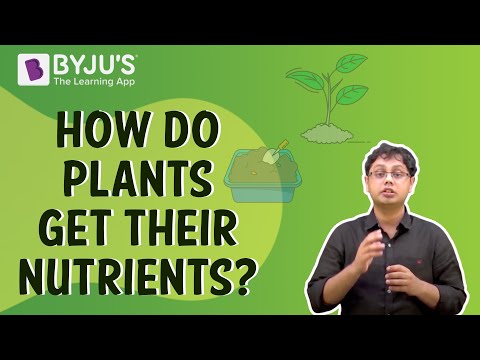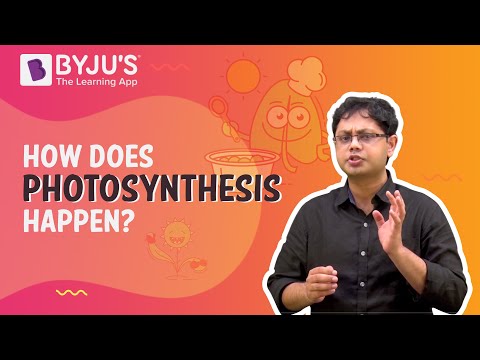Introduction to Nutrition in Plants
Living and Non-Living Organisms
- Living organisms like human beings, plants and animals need food to survive and exist.
- Living organisms reproduce, respond to the environment and also adapt.
- Living organisms respire and excrete as well.
Cells
Cells are tiny units that help make up a living organism. Hence, they are also called building blocks of an organism.
- A cell is constituted of three major parts :
- A thin outer layer is called the cell membrane.
- A spherical structure located at the centre of the cell is called a nucleus.
- A jelly-like substance that surrounds a nucleus called the cytoplasm.
To know more about Cell, visit here.
Single and Multi-Cellular Organisms
- Organisms that are made up of just one cell are called single-celled or Unicellular organisms. E.g. Amoeba
- Organisms with more than one cell in their body are called multicellular organisms.
- All human beings, plants and animals are multicellular organisms.
To know the difference between Unicellular and Muti-Cellular Organisms, visit here.
Nutrition
Nutrition is the mode of taking food by an organism and its utilisation by the body.
- Nutrition is very important as the nutrients from the food consumed enable living organisms to build their bodies and grow.
- Nutrition helps to repair damaged parts and organs.
- Nutrition also provides energy for carrying out various functions.
For more information on How Plants Get Their Nutrition, watch the below video

To know more about Nutrition, visit here.
Autotrophs and Heterotrophs
Organisms that make food themselves are called autotrophs.
- Plants are an example of autotrophs as they make their own food using carbon dioxide, water and light energy.
Organisms that rely on others and usually take in ready-made food made by the autotrophs are called heterotrophs.
- Animals and human beings are an example of heterotrophs as they depend on plants in many ways for their food.
To know the difference between autotrophs and heterotrophs, visit here.
Photosynthesis
Photosynthesis is the process of synthesis of food by green plants.
- This process usually takes place in the leaves of plants.
- The process requires chlorophyll (green-coloured pigment), sunlight, carbon dioxide and water.
For more information on Photosynthesis, watch the below videos:


To know more about Photosynthesis, visit here.
Organelles
- Organelles are tiny cellular structures inside a cell and perform specific functions that are important for the cell.
- They are found in the cytoplasm of a cell.
- E.g. Chloroplast is the cell organelle that carries out photosynthesis.
Chloroplasts
- The chloroplast is a type of organelle that exists in plants.
- These organelles contain chlorophyll, the green-coloured pigment that is responsible for carrying out the process of photosynthesis in plants.
Chlorophyll
- Chlorophyll is the pigment that is responsible for the synthesis of food in green plants.
- This pigment green colour to its bearers and is abundantly found in leaves.
- Chlorophyll is locked inside the chloroplast.
Process of Photosynthesis
The process of photosynthesis takes place in the leaves, the “food factory” of the plants.
- Carbon dioxide is taken in through tiny pores on the leaves called stomata.
- Water and minerals that are required for the process are transported to the leaves from the roots through the stem.
- Chlorophyll helps the leaves use the energy from the sunlight to prepare food using carbon dioxide, water and minerals.
- Oxygen is released as a by-product of this process.
- The equation can be given as follows:
To know more about Photosynthesis Process, visit here.
Nutrients Being Replenished in Soil
Nutrients
- Plants absorb mineral nutrients from the soil in order to make their own food and for other important processes.
- Soils need to be enriched with nutrients such as nitrogen, phosphorus, potassium etc regularly.
- Only then can we grow plants and keep them healthy.
- There are 17 most important nutrients for plants.
- 6 are called macronutrients, and the rest are called micronutrients.
- Macronutrients are required in large quantities, while micronutrients are required in very small quantities.
To know more about Soil Fertility: Replenishment of Nutrients, visit here.
Other Modes of Nutrition
Symbiotic Relationship
Organisms that live together and share their shelter and nutrients are said to be in a symbiotic relationship.
- Certain fungi live in the roots of trees.
- The tree provides nutrients to the fungus and, in return, receives help from it to take up water and nutrients from the soil.
- This association works well for both the fungi and the tree.
- Another common example is Rhizobium bacteria.
- They reside in the root nodules of leguminous plants.
- The bacteria provide a plant with nitrogen that they fix, and in turn, they get shelter and food from the plant.
Rhizobium
- Rhizobium is a type of bacteria that converts atmospheric nitrogen into a soluble form that can be utilised by plants (nitrogen fixation).
- It usually resides in the roots of leguminous plants like peas, gram, moong etc., and is instrumental in providing these plants with a rich source of nitrogen.
To know more about Rhizobium, visit here.
Nitrogen Fixation
- Nitrogen is an important nutrient required for soil and for plants.
- However, nitrogen in the atmosphere is not easily accessible.
The process by which nitrogen is converted into a form that can be used by plants and other living organisms is called nitrogen fixation.
To know more about Nitrogen Fixation, visit here.
Parasites
A parasite is a heterotroph that completely depends on another organism for its food.
- The organism to which the parasite latches onto is called the host.
- The host, in the process, is deprived of all nutrients for its own growth as they are consumed by the parasite.
- For example, Cuscuta (Amarbel) is a nongreen plant that takes readymade food from the plant on which it is growing.
To know more about Parasites, visit here.
Saprotrophs
Organisms which rely on dead and decaying matter for their food are called Saprotrophs.
- This mode of nutrition is called saprotrophic nutrition.
- For example, Fungi.
- Fungi secrete digestive juices on the dead and decaying matter and convert it into a solution.
- Then they absorb the nutrients from it.
To know the difference between Parasites and Saprotrophs, visit here.
Insectivorous Plants
Plants that feed on insects are called Insectivorous plants.
- These plants are green and carry out photosynthesis.
- But, they grow in nitrogen-deficient soils.
- So, in order to get nitrogen, they feed on insects.
- These insectivorous plants have their parts modified for attracting and catching insects.
- For example, The pitcher plant, Venous flytrap
To know more about Insectivorous plants, visit here.
Did You Know?
Cactus Plants
- Most of the photosynthesis takes place in the leaves of green plants.
- However, in the case of some desert plants, it takes place in their stem and even branches.
- Cacti are found in the desert, and their leaves are modified to spines to avoid loss of water due to transpiration.
- Therefore, their green stems enable them to carry out the process of photosynthesis.
Frequently Asked Questions on CBSE Class 7 Science Notes Chapter 1 Nutrition in Plants
What are micronutrients?
Micronutrients are vitamins and minerals required by the plant in very small amounts.
What is nutrient density?
The nutrient density of a food is the ratio of beneficial ingredients to the food’s energy content for the amount that is commonly consumed.
What are macronutrients?
Macronutrients are vitamins and minerals required by the plant in large amounts.
Comments